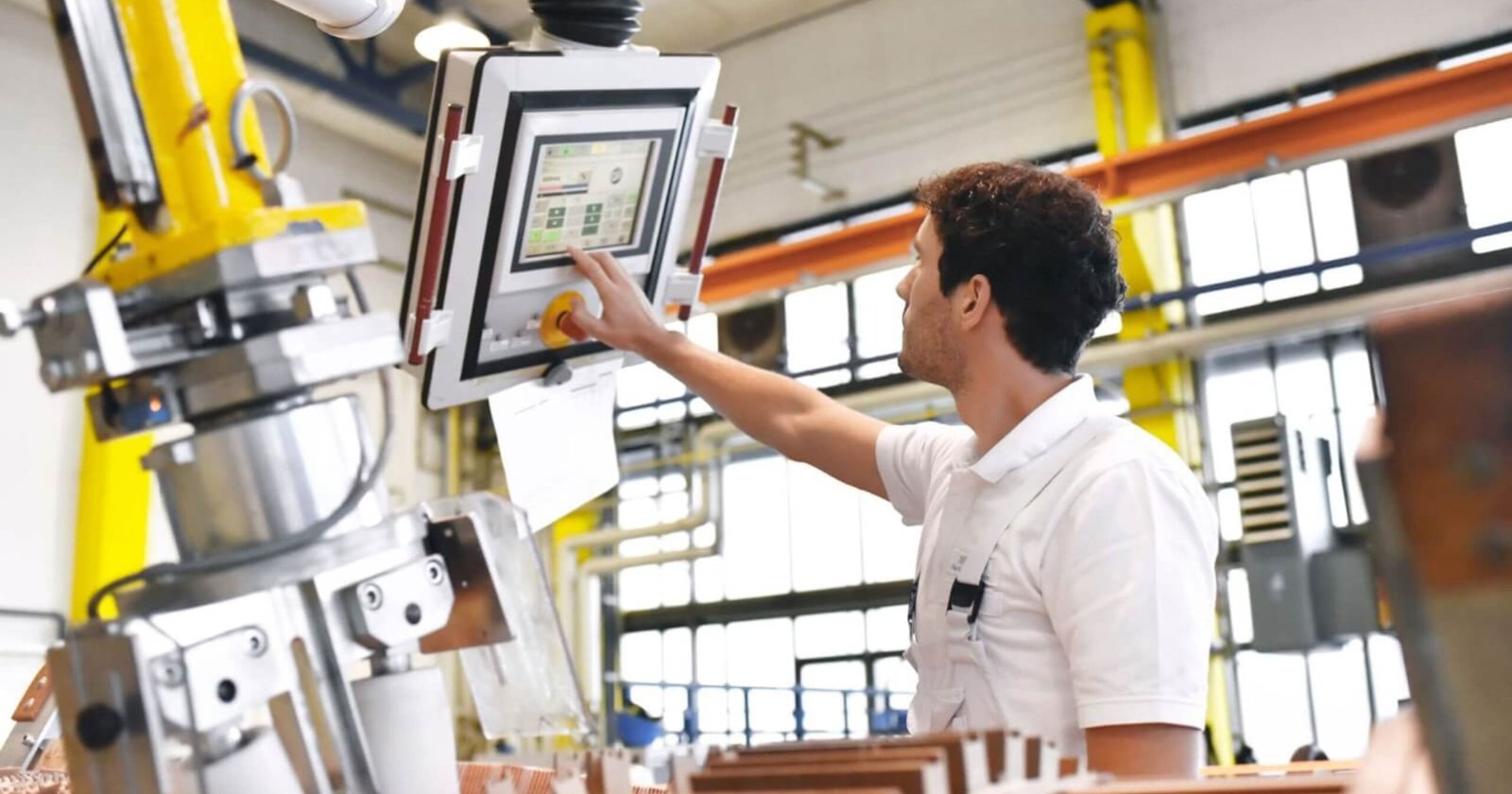Computer-Aided Manufacturing Offers Which Possible Benefits.
- Cost reduction.
- Increased productivity.
- Increased cycle times.
- Improved quality assurance.
- Flexibility.
- Reduced equipment requirements.
- Increased automation.
- Advanced design capabilities.
Computer-Aided Manufacturing (CAM) is a technology-driven process that leverages computer software and machinery to automate and optimize manufacturing processes.
This powerful combination facilitates precision, efficiency, and cost-effectiveness in the production of goods. In this comprehensive guide, we will delve into the manifold benefits that Computer-Aided Manufacturing offers to various industries and manufacturing sectors.
Enhanced Precision and Accuracy
- Description: CAM systems allow for extremely precise and accurate manufacturing, minimizing errors and ensuring high-quality end products.
- Key Points:
- CAM software translates digital designs into precise instructions for the machinery, resulting in a minimal deviation from the intended design.
- Advanced machining techniques enabled by CAM, such as multi-axis machining and high-speed machining, contribute to increased precision.
- The automated nature of CAM systems significantly reduces the likelihood of human errors that could occur during manual manufacturing processes.
Faster and More Efficient Production
- Description: CAM significantly accelerates the production process, reducing lead times and enhancing overall productivity.
- Key Points:
- Automation in CAM minimizes manual intervention, allowing for continuous and efficient manufacturing operations.
- CAM software optimizes tool paths, minimizing unnecessary movements and thus reducing machining time.
- Rapid prototyping and 3D printing, facilitated by CAM, enable quick iteration and testing of designs, speeding up the product development cycle.

Cost-Effectiveness and Waste Reduction
- Description: CAM helps minimize material wastage, saving costs, and making manufacturing processes more financially efficient.
- Key Points:
- CAM software optimizes tool paths and material usage, reducing the amount of raw material needed for manufacturing.
- Waste reduction in terms of both material and time directly translates into cost savings for the manufacturer.
- By minimizing human intervention and maximizing efficiency, labor costs are significantly reduced, contributing to cost-effectiveness.
Complex Geometric Manufacturing
- Description: CAM systems enable the manufacturing of intricate and complex geometric designs that would be challenging or impossible to produce manually.
- Key Points:
- CAM software allows for the production of complex 3D shapes and intricate designs with high precision and accuracy.
- Complex geometries can be achieved through advanced machining techniques such as 5-axis milling, enabling versatility in manufacturing.
- Industries like aerospace, automotive, and medical devices heavily rely on CAM for the production of intricate components and parts.
Seamless Integration with Computer-Aided Design (CAD)
- Description: CAM seamlessly integrates with CAD systems, creating a streamlined workflow from design to production.
- Key Points:
- Designs created in CAD can be directly imported into CAM software, saving time and maintaining design integrity.
- The integration allows for the automatic generation of toolpaths based on the CAD design, enhancing efficiency.
- Design modifications in CAD can be easily reflected in CAM, promoting quick adaptability to changes during the manufacturing process.
Improved Repeatability and Consistency
- Description: CAM ensures that each manufactured item is consistent in quality and specification, facilitating better product reliability and customer satisfaction.
- Key Points:
- CAM’s automated processes ensure that each item is produced according to the same specifications, eliminating variability in products.
- The precision and accuracy achieved through CAM contribute to the repeatability of the manufacturing process, which is vital for mass production.
- Consistency in the manufacturing process enhances the brand image, and fosters trust among consumers.
Optimized Resource Utilization
- Description: CAM optimizes the utilization of resources such as machinery, tools, and labor, maximizing efficiency and reducing idle time.
- Key Points:
- CAM software schedules and plans the use of machinery and tools to minimize idle time and ensure their optimal utilization.
- The software can predict potential issues, allowing for preventive maintenance and minimizing unexpected downtimes.
- By efficiently managing resources, CAM enhances productivity and ensures a cost-effective manufacturing process.

Customization and Flexibility in Manufacturing
- Description: CAM provides the flexibility to quickly adapt to changing market demands and produce customized products efficiently.
- Key Points:
- CAM enables rapid prototyping and toolpath modifications, allowing for the quick production of customized designs.
- Manufacturers can easily tailor production to meet specific customer requirements without significant setup time or cost increase.
- Customization capabilities provided by CAM enhance competitiveness and meet the demands of a diverse and evolving market.
Enhanced Safety in Manufacturing
- Description: CAM contributes to a safer manufacturing environment by reducing the need for manual, potentially hazardous tasks.
- Key Points:
- Automated processes in CAM reduce the need for manual handling of heavy machinery and dangerous tools, minimizing the risk of accidents.
- Advanced simulations within CAM software help identify and mitigate potential safety hazards before the actual manufacturing process begins.
- Improved safety not only protects workers but also avoids damage to expensive machinery and equipment.
Data and Performance Analysis
- Description: CAM systems collect valuable data during the manufacturing process, enabling performance analysis and continuous improvement.
- Key Points:
- CAM software tracks machine performance, tool usage, and production times, providing insights for optimizing future manufacturing processes.
- Analyzing the collected data helps in identifying bottlenecks and inefficiencies, allowing for informed decision-making to improve productivity and reduce costs.
- Real-time monitoring and analytics enable quick responses to issues, ensuring smooth manufacturing operations.
Remote Monitoring and Control
- Description: CAM allows for remote monitoring and control of the manufacturing process, providing real-time insights and enabling adjustments from remote locations.
- Key Points:
- CAM systems can be integrated with IoT (Internet of Things) devices to monitor machinery and production processes remotely.
- Manufacturers can track progress, machine performance, and potential issues, enabling timely adjustments and troubleshooting without being physically present.
- Remote monitoring enhances efficiency, reduces downtime, and allows for a more agile response to changes in production requirements.
Sustainability and Environmental Impact Reduction
- Description: CAM supports sustainable manufacturing practices by optimizing processes, reducing waste, and minimizing environmental impact.
- Key Points:
- CAM software optimizes toolpaths and material usage, minimizing waste generation during the manufacturing process.
- Efficient resource utilization and reduced energy consumption contribute to a greener manufacturing environment.
- By minimizing unnecessary material use and optimizing processes, CAM promotes sustainability and eco-friendliness in manufacturing.
Global Collaboration and Scalability
- Description: CAM facilitates global collaboration and scalability by allowing teams from different locations to work on the same project simultaneously.
- Key Points:
- Teams across the globe can collaborate on a project in real-time through shared CAM systems, improving efficiency and productivity.
- Scalability is enhanced as the same CAM program and process can be replicated across multiple facilities, saving time and effort in setting up new manufacturing lines.
- Global collaboration and scalability enable manufacturers to tap into a broader talent pool and reach diverse markets effectively.
Integration with Additive Manufacturing (3D Printing)
- Description: CAM seamlessly integrates with additive manufacturing technologies, enhancing the capabilities and precision of 3D printing.
- Key Points:
- CAM software generates precise toolpaths for 3D printers, ensuring accurate layering and optimal use of materials during additive manufacturing.
- The integration enhances the efficiency and quality of 3D printed parts, making additive manufacturing a viable choice for complex components.
- CAM in additive manufacturing accelerates the prototyping process, allowing for rapid iterations and design improvements.
Improved Quality Control and Quality Assurance
- Description: CAM contributes to better quality control by ensuring that each manufactured item adheres to predefined specifications and standards.
- Key Points:
- CAM systems integrate quality control measures within the manufacturing process, automatically checking dimensions, tolerances, and other critical parameters.
- Automated quality checks reduce human error, ensuring that only items meeting the desired quality criteria are produced.
- Enhanced quality control results in a reduced defect rate and improved customer satisfaction.
Faster Time-to-Market
- Description: CAM significantly reduces the time required to move from the design phase to the production phase, accelerating the time-to-market for new products.
- Key Points:
- Automated toolpath generation and rapid prototyping enabled by CAM speed up the product development cycle.
- Quick iterations in the design and manufacturing process ensure that products reach the market faster, gaining a competitive edge.
- Faster time-to-market helps in capitalizing on market trends and meeting consumer demands promptly.
Conclusion
Computer-Aided Manufacturing Offers Which Possible Benefits? Computer-aided manufacturing (CAM) presents a vast array of benefits that permeate the manufacturing industry, contributing to precision, efficiency, sustainability, and growth. From remote monitoring to integration with additive manufacturing and enabling global collaboration, CAM has become an indispensable tool for modern manufacturing. As CAM technology continues to evolve and integrate with other advancements, it promises an even more promising future, shaping the manufacturing landscape for generations to come.
FAQs
What are the advantages of computer-aided manufacturing?
Computer-aided manufacturing (CAM) offers multiple advantages, such as increased production speed, improved precision, and cost-effectiveness. It enhances productivity by automating manufacturing processes and allows for more efficient use of materials, reducing waste. Furthermore, CAM supports remote monitoring and control, which enhances operational efficiency. It also integrates with 3D printing technologies, enhancing the capabilities of additive manufacturing.
Brief Introduction to Computer-aided Manufacturing
Computer-aided manufacturing (CAM) has transformed traditional practices, offering a robust platform for executing complex manufacturing processes with ease and precision. It integrates seamlessly with Computer-Aided Design (CAD) systems, streamlining design and manufacturing into a smooth, efficient workflow. This paves the way for rapid prototyping and efficient production and minimizes errors, leading to high-quality output.
Which is a clear benefit of computer-aided manufacturing?
A clear benefit of Computer-Aided Manufacturing (CAM) is its ability to enhance production speed and precision. By automating the manufacturing process, CAM reduces human error and increases operational efficiency. Additionally, it allows for more efficient utilization of materials, leading to reduced waste and cost savings. This optimizes productivity and facilitates the delivery of high-quality output, making it a vital tool in modern manufacturing.
What are the 3 advantages of CAD CAM?
CAD CAM systems offer several advantages. Firstly, they improve efficiency by automating design and manufacturing processes. Secondly, they enhance precision, minimizing errors and ensuring consistent quality. Lastly, these systems accelerate product development, enabling rapid prototyping and faster time-to-market.









